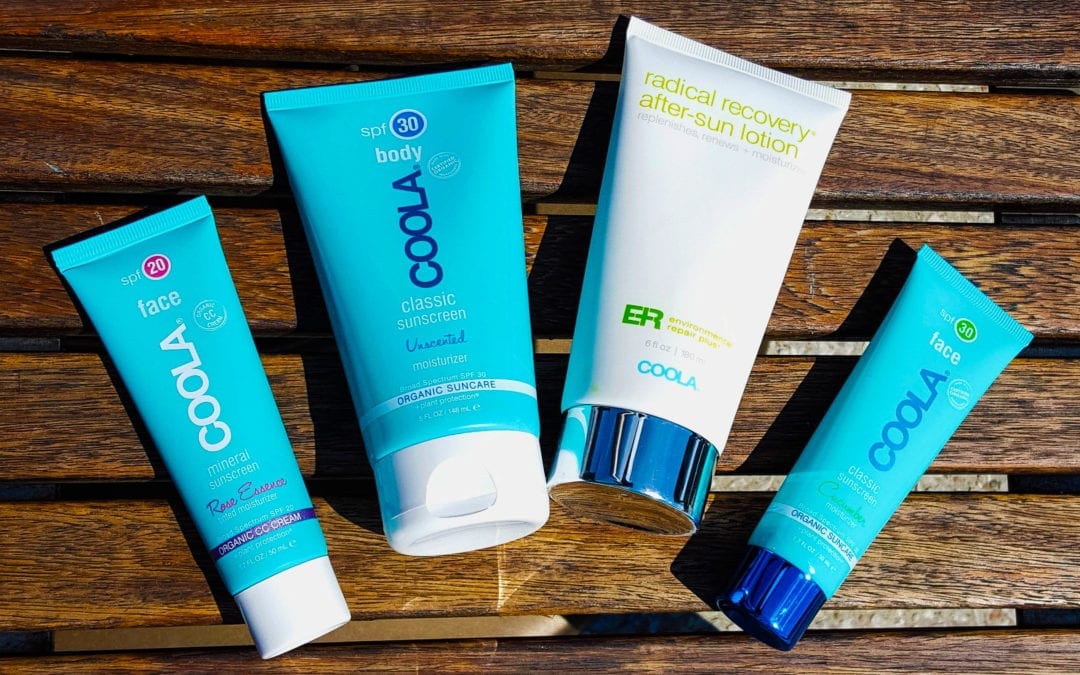With summer just around the corner most of us are starting to spend more time outside in the sun, which means increased exposure to its harmful rays. One of the easiest ways we can protect ourselves from damage from the sun is by using a daily sunscreen, but how do you know you are making the right choice for your skin and needs? We share some of the biggest factors that cause damage and the precautions you can take to protect your skin year-round.
What Causes the Damage?
The sun produces three types of ultraviolet (UV) radiation: UVA, UVB and UVC. UVC rays are absorbed by the earth’s ozone layer – which means it doesn’t make direct contact with your skin. UVA and UVB rays are absorbed by the skin and exposure to these rays can cause increased damage, dryness, oil production, breakouts, premature aging, and is proven to contribute to the risk of skin cancer. What is the difference between the two?
UVB Rays
UVB rays are most commonly associated with sunburns and are strongest in the summer. The term Sun Protection Factor (SPF) tells you the length of time the sun’s UVB rays would take to redden your skin when using that product, compared with the time it would take if you were using none. UVB rays cannot penetrate glass and are strongest between the hours of 10AM and 4PM.
UVA Rays
UVA rays are associated with aging (wrinkling, discoloration and loss of elasticity) due to their ability to penetrate deeper layers in the skin. These rays are dangerous all year round and maintain the same intensity throughout the day. They can even cause damage through cloud cover and glass.
Protecting Your Skin
The best way you can protect your skin against damage from the sun is by using a daily sunscreen. Much like choosing a new skincare product, it is important to understand a few terms when deciding which type of sunscreen is right for you and your specific needs.
Broad spectrum: contains ingredients that effectively protect the skin against both UVA and UVB rays.
Chemical: Penetrates the skin and absorbs UV rays and often include the ingredients oxybenzone, avobenzone, octisalate, octocrylene, homosalate and octinoxate. Chemical sunscreens tend to be preferred for products formulated for water-resistance as their texture and appearance tends to work better when wet.
Mineral and/or Physical: Sit on top of the skin and form a layer that block rays before they are absorbed by your skin and often include titanium dioxide and zinc oxide. Mineral sunscreens tend to be best for those with sensitive skin as they have a very low chance of causing irritation.
Sun Protection Factor (SPF): used to measure the effectiveness of a product in protecting against UVB rays.
Choosing a Sunscreen
When choosing a sunscreen, the type of sunscreen you choose (chemical vs. mineral) and the form it takes (lotion, moisturizer, spray, etc.) can be based on your own personal preference, though the SPF in your favorite foundation sadly won’t suffice. The single most important thing to look for is a broad spectrum with the right SPF rating for your activity and skin. Generally, a broad-spectrum sunscreen with an SPF of 15 percent or more is recommended for regular day-to-day activities when you are spending more time indoors than in the sun. If you work outdoors or know you are going to be spending a larger portion of your day outside it is best to opt for a broad spectrum with a SPF that is 30 percent or higher. To see the best results, sunscreen should be applied at least 15 minutes before sun exposure and then reapplied at least every two hours or after washing your hands, swimming, or sweating. These are general recommendations and it could be too low if you are fair skinned or burn easily, take some time to play around with different sunscreens until you find one that works for your needs and that you are comfortable with wearing every day.
Other Ways to Protect Your Skin
- Cloudy days can be just as harmful as sunny days. Even in the winter, it is important that you are still using a daily sunscreen to protect you from damage from the sun. Consider a slightly higher SPF when spending the day in the snow – the reflection of the sun off the snow can also cause you to burn.
- Check the expiration date. With sunscreens, it is important to use products that are not expired to ensure you are receiving maximum protection.
- Protect your lips, too. Make sure you are using a product that helps protect your lips from sun damage.
- Dress to protect. Clothing is also an important factor in protecting against the sun. When possible, opt for longer sleeves and dark or bright colored fabrics to help block out light. Some companies make clothing specifically designed for sun protection that help block rays from seeping through the fabric. When choosing these items look for a high UPF rating for protection, a 30-49 is considered very good while a 50 or higher is considered excellent. If nothing else, just throw on a wide brimmed hat to protect your neck, ears and face.
- Use an Antioxidant serum. Combining your favorite sunscreen with an antioxidant serum is a great way to maximize the protection your skin is receiving. These serums are designed to combat other harmful airborne factors that can damage the skin such as pollution, smoke and heat.
- Try a sunless tanning product. Worried you won’t be able to get your summer glow? Try using tanning drops, sprays and lotions you can apply at home to limit your exposure to the sun so your skin can remain healthy and beautiful for years to come.


